- Photo Safaris
- Alaska Bears & Puffins World's best Alaskan Coastal Brown Bear photo experience. Small group size, idyllic location, deluxe lodging, and Puffins!
- Participant Guestbook & Testimonials Candid Feedback from our participants over the years from our photo safaris, tours and workshops. We don't think there is any better way to evaluate a possible trip or workshop than to find out what others thought.
- Custom Photo Tours, Safaris and Personal Instruction Over the years we've found that many of our clients & friends want to participate in one of our trips but the dates we've scheduled just don't work for them or they'd like a customized trip for their family or friends.
- Myanmar (Burma) Photo Tour Myanmar (Burma) Photo Tour December 2017 -- with Angkor Wat option
- Reviews Go hands-on
- Camera Reviews Hands-on with our favorite cameras
- Lens reviews Lenses tested
- Photo Accessories Reviews Reviews of useful Photo and Camera Accessories of interest to our readers
- Useful Tools & Gadgets Handy tools and gadgets we've found useful or essential in our work and want to share with you.
- What's In My Camera Bag The gear David Cardinal shoots with in the field and recommends, including bags and tools, and why
- Articles About photography
- Getting Started Some photography basics
- Travel photography lesson 1: Learning your camera Top skills you should learn before heading off on a trip
- Choosing a Colorspace Picking the right colorspace is essential for a proper workflow. We walk you through your options.
- Understanding Dynamic Range Understanding Dynamic Range
- Landscape Photography Tips from Yosemite Landscape Photography, It's All About Contrast
- Introduction to Shooting Raw Introduction to Raw Files and Raw Conversion by Dave Ryan
- Using Curves by Mike Russell Using Curves
- Copyright Registration Made Easy Copyright Registration Made Easy
- Guide to Image Resizing A Photographers' Guide to Image Resizing
- CCD Cleaning by Moose Peterson CCD Cleaning by Moose Peterson
- Profiling Your Printer Profiling Your Printer
- White Balance by Moose Peterson White Balance -- Are You RGB Savvy by Moose Peterson
- Photo Tips and Techniques Quick tips and pro tricks and techniques to rapidly improve your photography
- News Photo industry and related news and reviews from around the Internet, including from dpreview and CNET
- Getting Started Some photography basics
- Resources On the web
- My Camera Bag--What I Shoot With and Why The photo gear, travel equipment, clothing, bags and accessories that I shoot with and use and why.
- Datacolor Experts Blog Color gurus, including our own David Cardinal
- Amazon Affiliate Purchases made through this link help support our site and cost you absolutely nothing. Give it a try!
- Forums User to user
- Think Tank Photo Bags Intelligently designed photo bags that I love & rely on!
- Rent Lenses & Cameras Borrowlenses does a great job of providing timely services at a great price.
- Travel Insurance With the high cost of trips and possibility of medical issues abroad trip insurance is a must for peace of mind for overseas trips in particular.
- Moose Peterson's Site There isn't much that Moose doesn't know about nature and wildlife photography. You can't learn from anyone better.
- Journeys Unforgettable Africa Journeys Unforgettable -- Awesome African safari organizers. Let them know we sent you!
- Agoda International discounted hotel booking through Agoda
- Cardinal Photo Products on Zazzle A fun selection of great gift products made from a few of our favorite images.
- David Tobie's Gallery Innovative & creative art from the guy who knows more about color than nearly anyone else
- Galleries Our favorite images
New Sony RX10 III field-tested: The ultimate all-in-one Superzoom is now even better
New Sony RX10 III field-tested: The ultimate all-in-one Superzoom is now even better
Submitted by David Cardinal on Mon, 06/20/2016 - 07:53
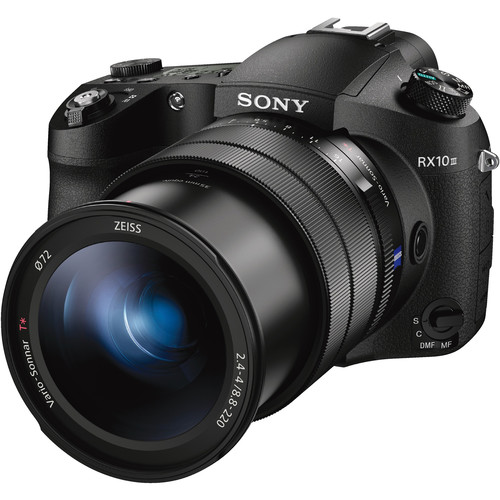 No one like carrying a lot of camera gear, or changing lenses. But for many of us it is a necessary evil to get the shots we want. But the question I get asked most is "I want a camera that does it all, but I don't want to carry several lenses or a big backpack or tripod, what should I buy?" The new Sony RX10 III is an excellent answer. With a 1-inch-format 20MP sensor, and a 24-600mm super-zoom lens from Zeiss, it takes remarkably good images for an all-in-one camera, and it does it across a massive focal length range. The big upgrade from the Mark II is an increase in zoom range from 200mm to 600mm at the long end (resulting in a slightly larger, and more-expensive, camera).
No one like carrying a lot of camera gear, or changing lenses. But for many of us it is a necessary evil to get the shots we want. But the question I get asked most is "I want a camera that does it all, but I don't want to carry several lenses or a big backpack or tripod, what should I buy?" The new Sony RX10 III is an excellent answer. With a 1-inch-format 20MP sensor, and a 24-600mm super-zoom lens from Zeiss, it takes remarkably good images for an all-in-one camera, and it does it across a massive focal length range. The big upgrade from the Mark II is an increase in zoom range from 200mm to 600mm at the long end (resulting in a slightly larger, and more-expensive, camera).
Do you need a Super-zoom?
There is always a tradeoff for having a massive zoom range on a camera. It means a combination of larger size and usually lesser optics compared to a non-super zoom that has similar features. The Sony RX10 III is no exception. If you "only" want a standard zoom range, you can spend less and get the smaller Sony RX100 IV, or the new Canon G7 X. Both have essentially the same sensor, most of the same features, and are about 1/2 the size and about 2/3 the price.

A superzoom can be surprisingly helpful even for street photography.
You can capture scenes from much larger distances,
like this one taken at 350mm (full-frame equivalent)
But if you are planning to go on an African safari, photograph birds, try to get closeups of your favorite players at sporting events, or even like to do street photography from a safe distance, the 24-600mm zoom range will come in handy. You can control the zoom either pseudo-manually (you turn the ring, and the motor zooms the lens) or with a conveniently-located control lever near the shutter release (which is the way I wound up using the camera most of the time). Part of the reason for the relatively-large size of the RX10 is the speed of the lens. Its maximum aperture ranges from f/2.4-f/4, which is remarkably good for a nearly 30x zoom.
Image Quality
At low to moderate ISOs, the Sony RX10 III delivers high-quality images suitable for almost any use. At higher ISOs (especially over 1600) the physical limits of its 1-inch-format sensor start to show through with increased noise. The camera’s own noise reduction software does a good job of trying to minimize it in the JPEG versions, but those used to larger APS-C or especially full-frame sensors, will notice that they can’t push the ISO nearly as high. Conversely, those moving up from a smartphone camera or low-end point-and-shoot will enjoy being able to use higher ISOs than they are used to.

Being able to shoot at over 200mm in a dark bar is an achievement for an all-in one,
but you can also see the noise in this (unedited except for resizing) 6400 ISO JPEG.
The 1-inch-format sensor puts the camera’s raw images in basically the same quality category as the Canon G9 X, Sony’s own Sony RX100 IV, or the DxO ONE iPhone add-on. DxOMark hasn’t tested the Mark III version, but the Mark II weighs in at 70, the same as the newest RX100 model and the DxO ONE, and a few points above the G9 X. In any case, if you need the superzoom range of the Sony RX10 III, those cameras aren’t going to meet your needs. However, if you don’t need the large zoom range, any of them will be smaller and less expensive, while providing similar image quality.
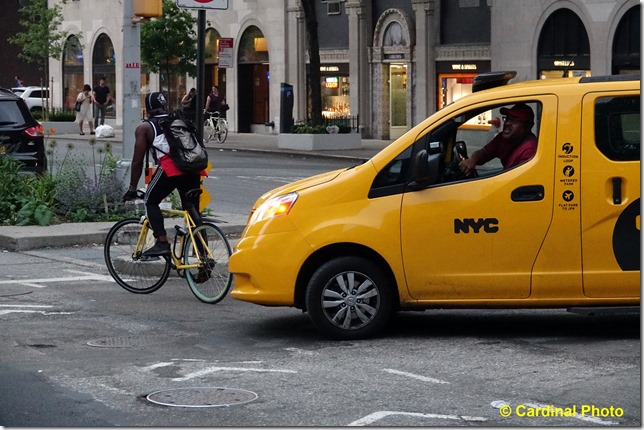
A relatively-high-speed frame rate (5 fps even without 14 fps burst mode) lets you capture unfolding events,
like this altercation between a Manhattan taxi driver and cyclist. I only wish I’d been recording video,
as the dialog was priceless. 1/500s @ f/4, ISO 5000
Camera Control & User Interface
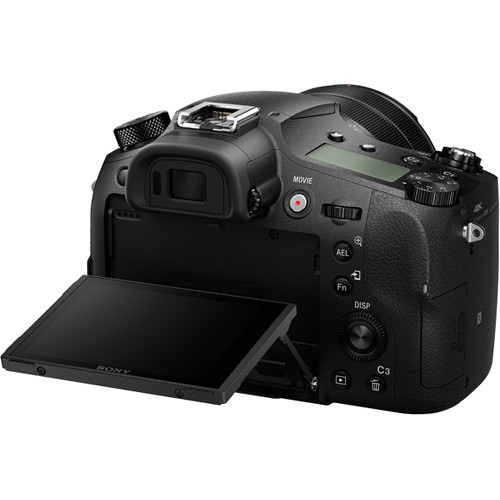 The shutter button and lens zoom control are easy to reach & find without looking. The Record button is a little trickier, but not too hard to get used to. The controls on the back are laid out similarly to many high-end point-and-shoots and all-in-ones, although not all of them are in the same place as you may be used to. There is no front command dial, which means that for a second command dial you use the little control wheel on the back of the camera. Exposure compensation is conveniently-located on a large, dedicated wheel next to the shutter. This is mostly great, although the wheel doesn't lock, so you can accidentally move it when handling the camera.
The shutter button and lens zoom control are easy to reach & find without looking. The Record button is a little trickier, but not too hard to get used to. The controls on the back are laid out similarly to many high-end point-and-shoots and all-in-ones, although not all of them are in the same place as you may be used to. There is no front command dial, which means that for a second command dial you use the little control wheel on the back of the camera. Exposure compensation is conveniently-located on a large, dedicated wheel next to the shutter. This is mostly great, although the wheel doesn't lock, so you can accidentally move it when handling the camera.
One really-strange quirk (with a verified with a Sony tech support person at #OPTIC2016) is that in Aperture mode the only way to change the aperture is with the not-that-convenient manual aperture ring at the base of the lens. It is too close to the camera body for me to feel comfortable finding and using it without accidently moving the zoom ring. There is no command dial alternative (which is especially odd since in Shutter priority, the command wheel does what you'd expect and changes the shutter speed). I can only hope Sony is listening and fixes this in a firmware update.
Other than that the Sony interface is pretty typical for its mid-range cameras. I've complained about it before, but it is getting better over time (and I guess I'm getting more used to it, since I review so many Sony cameras). Key to making it work is to program the custom buttons for your favorite functions like ISO (hunting through the menus to change ISO is a serious waste of time). Sony offers a good set of possible programming alternatives (except for programming one of the dials to control Aperture:-)).

The Sony RX10 III is certainly an excellent all-around camera.
I used it at nearly every focal length on the OPTIC 2016 sunset cruise.
1/500s @ f/9, ISO 1250, 80mm full-frame effective
One thing Sony did really well on the RX10 III is the focus point control. I like to control where my camera is focusing, but still take advantage of the camera's ability to track subjects and focus in difficult situations. The RX10 allows me to move the primary focus point around using the thumbpad on the back, while still supporting object-tracking. Most of the time, the AF is quite fast, and features intelligent subject detection to help accelerate it, but the system is based entirely on contrast detection AF points (there are no phase detection sensors). That means that in some cases the camera can have trouble locking on low-contrast subjects, and sometimes "racks" in and out searching for focus in cases where a DSLR or a mirrorless camera with phase-detect AF would have less trouble.
Telephoto performance
Wildlife photographers, especially those who focus on birds, are always looking for more zoom range. For those who want the range, but not the hassle of changes lenses. The Sony RX10 III is certainly appealing. So I took it to the Eastern Shore of Maryland and Delaware and put it through its paces. It was no substitute for a full-frame DSLR & massive lens, but it was sure a lot easier to haul around (which I thought about every time I could simply step out of the car and shoot while my buddy had to retrieve his tripod and rig from the trunk). Here is an example image – one of a sequence I took of an Osprey flying by with nesting material. Almost all the images were sharp (within the limits of the camera and optics), so picking one was mostly about composition. You can see from the original image (top) that even at 600mm, the bird was small in the frame. The second image shows that there is room for some cropping and processing images from this camera.
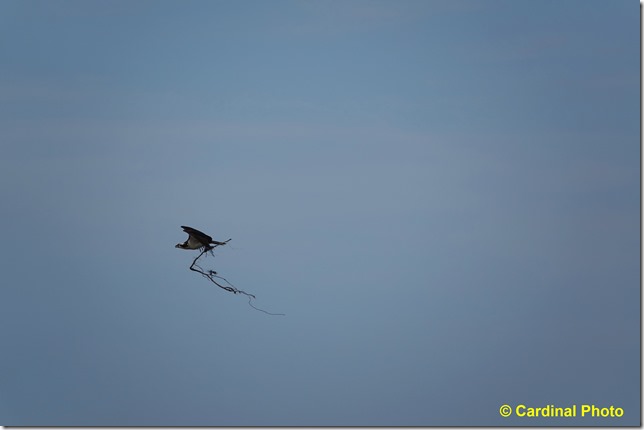
Original (resized) JPEG shot at 520mm equivalent.
1/1250s @ f/4, ISO 100
Osprey at Blackwater Wildlife Refuge
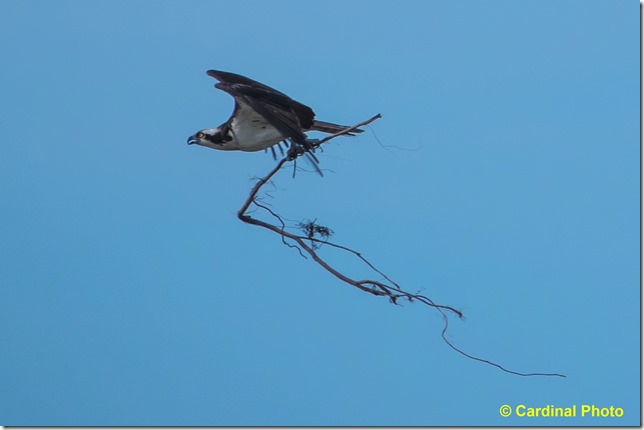
Here is a version that is cropped, tweaked a little in ACR, and white-balance corrected
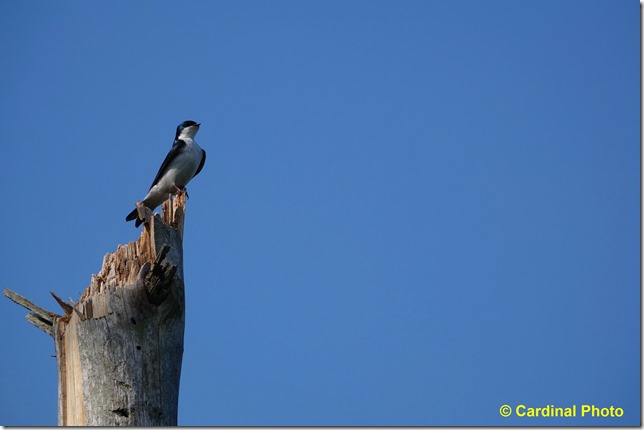
This Tree Swallow was captured at maximum zoom of 600mm
Sony RX10 III, 1/500s @ f/7.1, ISO 160
Slaughter Beach, Delaware
Good-looking 4K Video
Videographers will love the camera's ability to capture 4K video at up to 30fps, coupled with the capability to record 1080p HD video at up to 120fps. Lower resolutions support even higher frame rates, for special effects shooting. I captured this busy street scene in 4K, hand-held, although I did run Google’s stabilization filter on the result. Other than that it is straight out of the camera:
Size & Weight
The Sony RX10 III is way beyond pocket-sized. The new superzoom lens increases the weight about 10 ounces from the previous model -- to 38 ounces. It is also an inch longer (front to back) and a little wider than the Mark II. So you'll need to have some type of small bag for it when not in use. It has a 72mm filter thread on the front, so you can throw a skylight filter on for protection, or use polarizers or other creative filters with it.
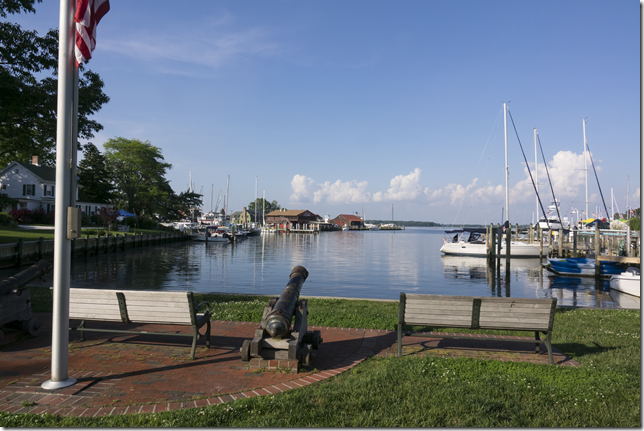
This Eastern Shore harbor scene illustrates both a weakness and a strength of the Sony RX10 III:
I shot it at –1.7 e.v. because the dial moved without my noticing (no lock and it is over the edge), but
I was able to correct it in Camera Raw (or Lightroom) and still came up with a very-usable result.
Sony RX10 III, 1/1000s @ f/5.3, ISO 100, 24mm full-frame equivalent
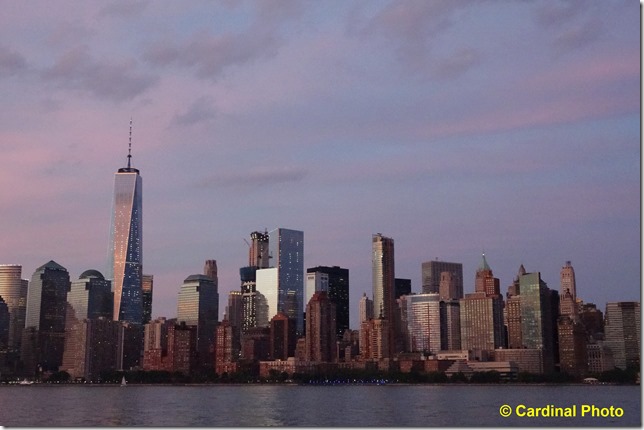
The gorgeous evening light in this scene made me wish for a full-frame camera, as it needed ISO 6400
The Sony RX10 III got the color right, but you can see the noise, especially in the sky
1/250s @ f/6.3, ISO 6400
Full Specs:
Pixels
Actual: 21.0 Megapixel
Effective: 20.1 Megapixel
Sensor
1" (13.2 x 8.8 mm) CMOS
File Formats
Still Images: JPEG, RAW
Movies: AVCHD Ver. 2.0, MP4, XAVC S
Audio: AAC LC, AC3, Dolby Digital 2ch, Linear PCM (Stereo)
Max Resolution
5472 x 3648
Aspect Ratio
1:1, 3:2, 4:3, 16:9
Image Stabilization
Optical & Digital
Color Spaces
sRGB, Adobe RGB
Lens
Carl Zeiss Vario-Sonnar, 18 elements in 13 groups
6 Aspherical, 8 ED
EFL: 8.8-220mm (35 mm equivalent: 24-600mm)
Aperture: f/2.4 (W) - 4 (T) to f/16
Filter Thread
72mm
Zoom
Optical: 25x
Clear Image Zoom: 2x
Digital: 4x
Focus Range
Wide: 1.18" (3 cm) - Infinity
Telephoto: 2.36' (72 cm) - Infinity
ISO Sensitivity
Auto, 100-12800 (Extended Mode: 64-12800)
Shutter
Type: Mechanical
Speed: 30 - 1/2000 second in Bulb Mode
Type: Mechanical
Speed: 30 - 1/2000 second in Program Mode
Type: Electronic
Speed: 30 - 1/32000 second in Aperture Priority Mode
Type: Electronic
Speed: 4 - 1/32000 second in Auto Mode
Exposure Metering
Center-weighted, Multi, Spot
Exposure Modes
Modes: Aperture Priority, Auto, Manual, Memory Recall, Movie, Panorama Shot, Program, Scene Selection, Shutter Priority
Compensation: -3 EV to +3 EV (in 1/3 EV steps)
White Balance Modes
Auto, Cloudy, Color Temperature, Custom, Daylight, Flash, Fluorescent (Cool White), Fluorescent (Day White), Fluorescent (Daylight), Fluorescent (Warm White), Incandescent, Shade
Continuous Shooting
Up to 14 fps at 20.1 MP
Up to 5 fps at 20.1 MP
Self Timer
10 Sec, 5 Sec, 2 Sec
Flash Modes
Auto
Flash On
Off
Rear Sync
Slow Sync
Wireless
Built-in Flash
Yes
Maximum Effective Flash Range
Wide: 3.28 - 35.43' (1 - 10.8 m)
Telephoto: 3.28 - 21.33' (1 - 6.5 m)
External Flash Connection
Hot Shoe, Wireless
Memory Card Type
SD
SDHC
SDXC
Memory Stick Duo
Memory Stick Pro Duo
Memory Stick PRO Duo (High Speed)
Memory Stick PRO HG-Duo
Memory Stick Micro
Memory Stick Micro (M2)
Video Recording
Yes, NTSC/PAL
Resolution
3840 x 2160p: 30 fps, 24 fps
1920 x 1080p: 120 fps, 60 fps, 30 fps, 24 fps
1920 x 1080i: 60 fps
3840 x 2160p: 25 fps
1920 x 1080p: 100 fps, 50 fps, 25 fps
1920 x 1080i: 50 fps
1920 x 1080p: 960 fps, 480 fps, 240 fps
1920 x 1080p: 1000 fps, 500 fps, 250 fps
Video Clip Length
Up to 4 GB or 29 Minutes
Audio Recording
Built-in Mic: With Video, Stereo
Optional External Mic: With Video
Viewfinder Type
Electronic
Diopter Adjustment
- 4 to +3 m
Viewfinder Coverage
100%
Screen
3.0" LCD Rear Screen Tilt (1,228,800 pixels)
Screen Coverage
100%
Connectivity/System Requirements
Connectivity
1/8" Headphone, 1/8" Microphone, HDMI D (Micro), Micro-USB, USB 2.0
Wi-Fi
Yes, 802.11b/g/n built-in
Operating/Storage Temperature
Operating
32 to 104°F (0 to 40°C)
Battery
1x NP-FW50 Rechargeable Lithium-Ion Battery Pack, 7.2 VDC, 1020 mAh
Dimensions (WxHxD)
5.2 x 3.7 x 5.0" / 132.5 x 94.0 x 127.4 mm
Weight
2.41 lb / 1095 g with battery and memory card
Package Weight
3.75 lb
Box Dimensions (LxWxH)
8.4 x 6.3 x 6.1"
- Log in to post comments

